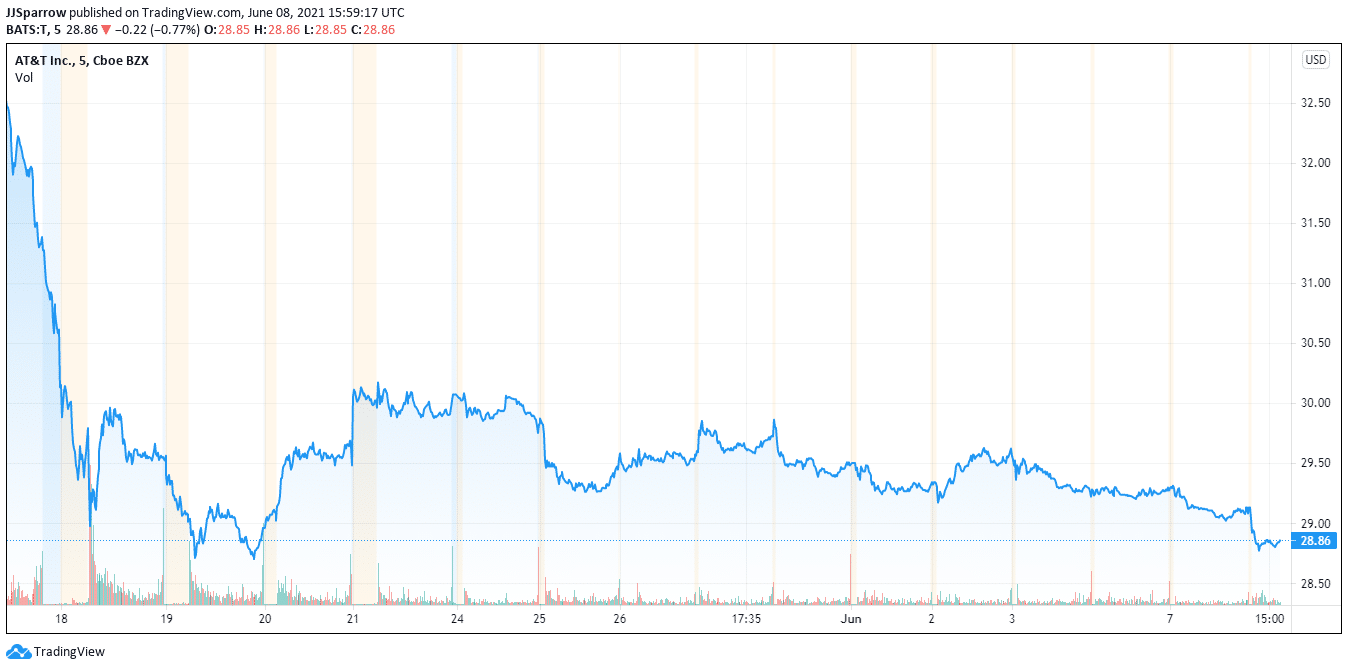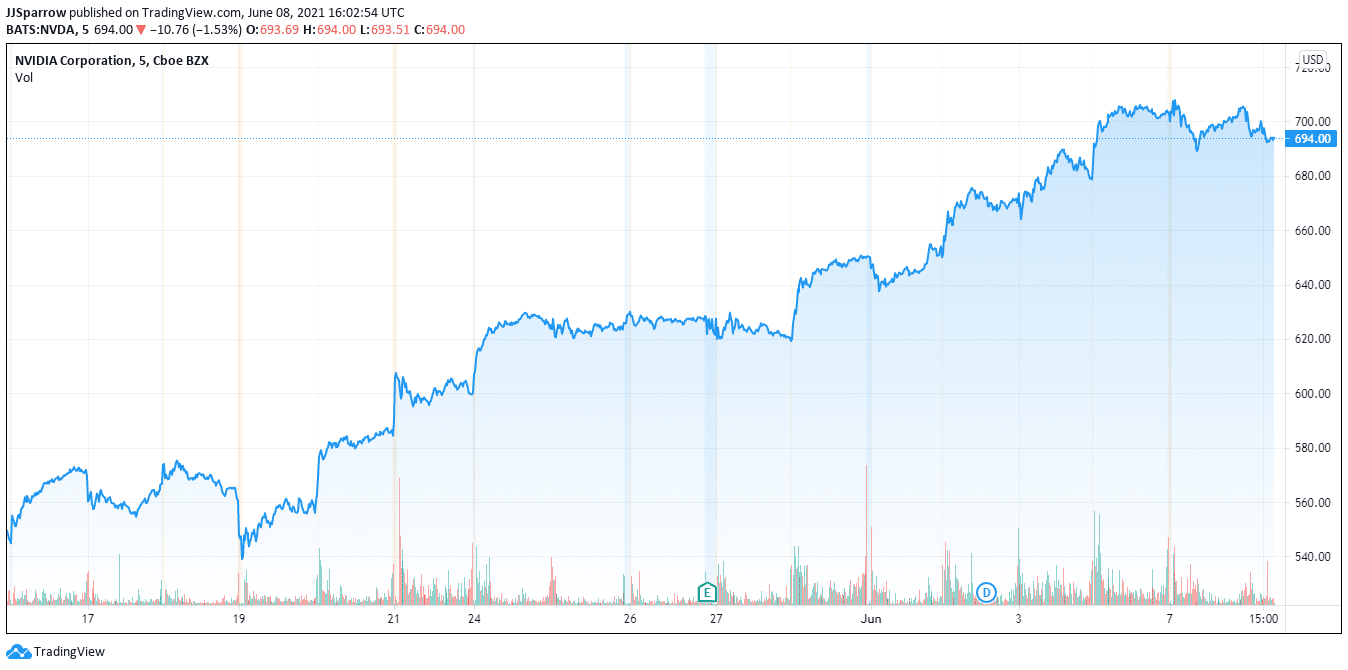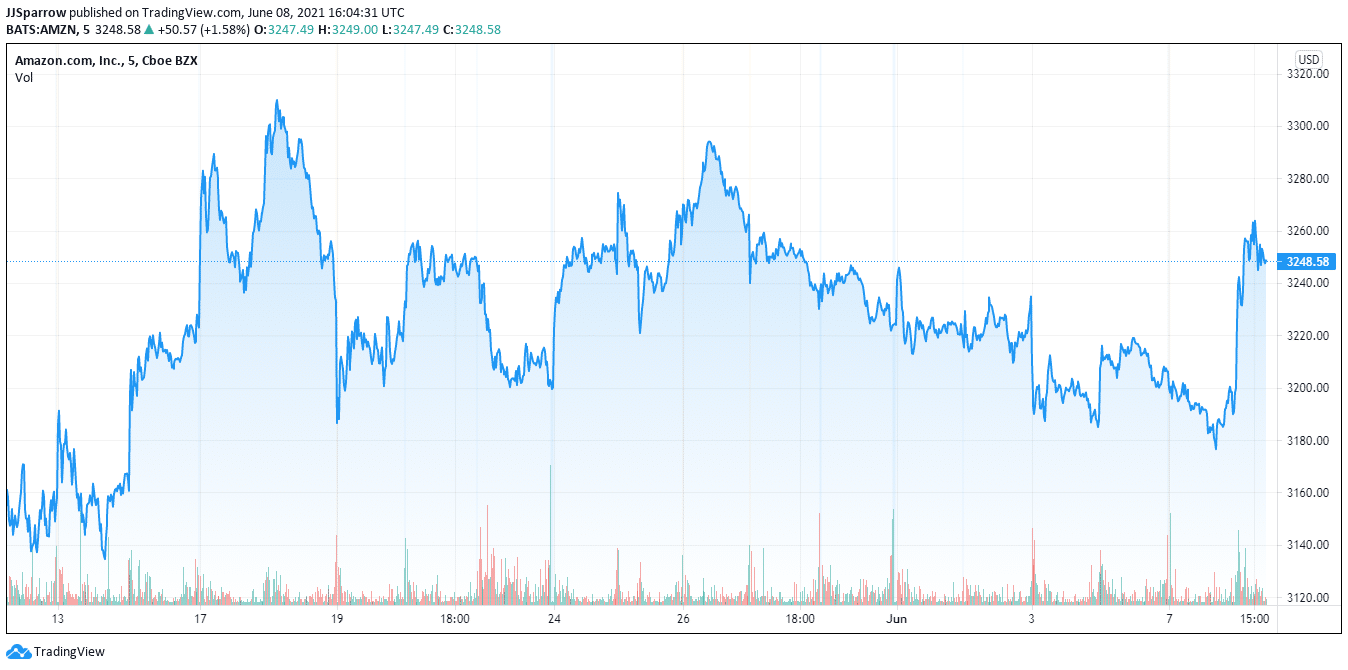Best 5G Stocks to Buy in June 2021
Please note that we are not authorised to provide any investment advice. The content on this page is for information purposes only.
The 5G revolution is still in its early days. 5G is expected to bring a paradigm shift to how we see computing itself. Like every trend, forward-thinking investors are already looking at how to invest in the best 5G stocks.
Currently, a growing number of major telecom, hardware, and software companies are already contemplating switching to 5G–which would see billions of users migrate from the base 4G technology. Governments in the developed world are also expanding their 5G capacities and awarding contracts worth billions to help improve their network infrastructure.
A McKinsey report predicts that 25 percent of the global population will be able to use the technology by 2030 – especially in wealthy parts of the world like mainland China, Europe, and the United States. By powering higher speeds, 5G will allow billions of users to grow their demand for technology. This will grow markets and lift stocks in sectors that are affected by this growth in connectivity.
Per the McKinsey report, the communication revolution powered by 5G could add between $1.5 trillion and $2 trillion to the global GDP. With so much potential upside, here’s a list of the best 5G stocks to invest in now.
1.) AT&T (NYSE:T)
It is impossible to detail the best 5G stocks without mentioning AT&T. The company is already one of the largest telecom service providers in the United States, and it has spent a fortune on bolstering its 5G technology.
Beyond 5G, AT&T also has some impressive lines of business. The firm acquired DirecTV and WarnerMedia over the past few years. The latter is especially lucrative, with names like CNN, Warner Bros., TNT, TBS, and HBO now under AT&T’s belt. HBO’s HBO Max streaming service is also a catalyst for growth, with a 40 percent signup increase heading into the year.

Recently, AT&T pitched the idea of combining WarnerMedia with Discovery to focus on 5G and fiber to “to meet substantial, long-term demand for connectivity.” The company specifically said that it plans to spend about $24 billion yearly on capital expenditures from 2023.
With this increased spending, AT&T expects to reach 30 million locations by the end of 2025 and about 200 million people with a C-band mid-band spectrum for 5G by 2023’s ending.
As for fundamentals, AT&T is pretty strong. The company reported Q1 earnings in April, announcing that it beat analysts’ projections for revenues and earnings. AT&T managed to add more postpaid wireless subscribers as well, with 595,000 more customers vs. an expected 216,000 gain.
Q1 profits rose to $0.86 a share, up 2 percent year-on-year. Revenues jumped 3 percent to $43.9 billion, exceeding estimates of $42.69 billion. WarnerMedia has also been lucrative so far, with Q1 revenues jumping 9.8 percent to $8.5 billion. At press time, AT&T stock trades at $28.84.
2.) Nvidia (NASDAQ: NVDA)
Nvidia is one of the top graphics processor manufacturers in the world. It might be a surprise inclusion on our list of the best 5G stocks, but the company has some strong links to the technology – as well as impressive fundamentals.
Nvidia’s strength comes in the quality of its chips. The company’s graphics processors power several tools that will eventually run on 5G networks. Last year, Nvidia reported that researchers were now using its processors to build AI-on-5G-solutions that would develop the 5G network.
With the company able to build the technologies that will run on 5G, Nvidia might be an intriguing 5G play. From 5G to cryptocurrencies and the Internet of Things (IoT), Nvidia could just be a forerunner of the coming digital gold rush.
As for numbers, Nvidia’s 2020 revenues were up 53 percent year-over-year. Adjusted earnings also increased by a staggering 73 percent. Strong numbers like that deserve a second look for sure.

Nvidia’s stock fell on Tuesday, dropping by 1.8 percent to $692.04. The drop came following reports that the company’s acquisition of U.K. chip designer Arm could be delayed. Nvidia had announced the acquisition back in November. However, the delay could mean that the deal won’t close until late 2022.
Despite the drop, Nvidia is still holding strong. Its bullish trend over the past 3 months remains prominent, with the stock gaining 36 percent in that time. It is expected to enter a bit of resistance soon, but that will only set it up for an even bigger breakout.
3.) Amazon (NASDAQ: AMZN)
Yes, Amazon is an e-commerce company. However, most people tend to forget that ecommerce isn’t the goose that lays the golden eggs for Amazon – it’s Amazon Web Services (AWS), Amazon’s cloud computing service.
AWS recorded 28 percent revenue growth in 2020’s fourth quarter alone. With over $13.5 billion in profits for 2020, AWS ended the year with 63 percent of the company’s entire profit haul. While AWS doesn’t have any 5G technology, it benefits from being the most forward-thinking cloud computing service available.

Today, 5G needs cloud more than ever. Increased 5G use will bring a heavier requirement for cloud computing and data storage, putting AWS at the forefront to benefit. And with Amazon’s focus on consolidation, the company could test out 5G on AWS to improve e-commerce areas like routing, warehouse optimization, and more.
Amazon stock is up 1.79 percent in the past 24 hours. With a current price peg of $3,254, the stock is still in a consolidation phase and fast approaching the buy point of $3,552.35. Another alternative buy point is 3,434.10 – a point that will show renewed confidence in Amazon’s stock profitability.




